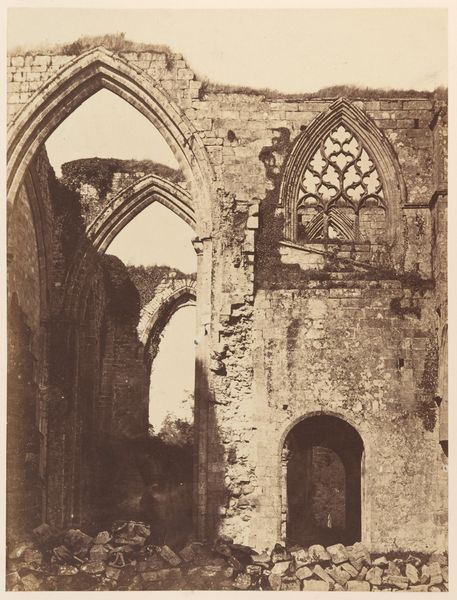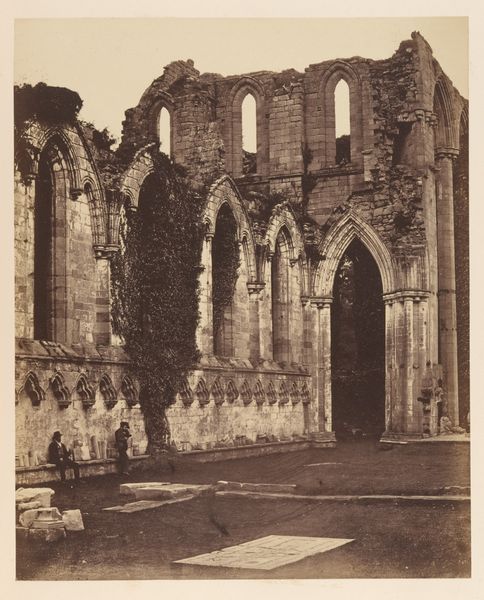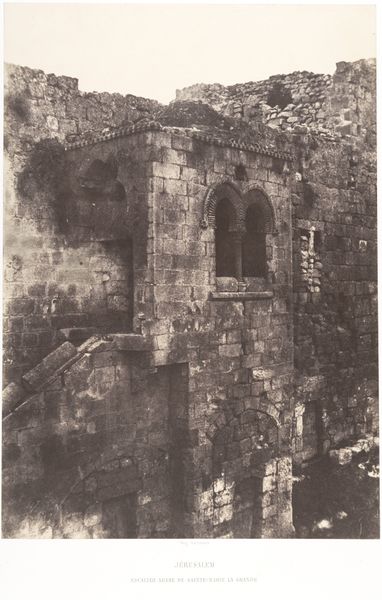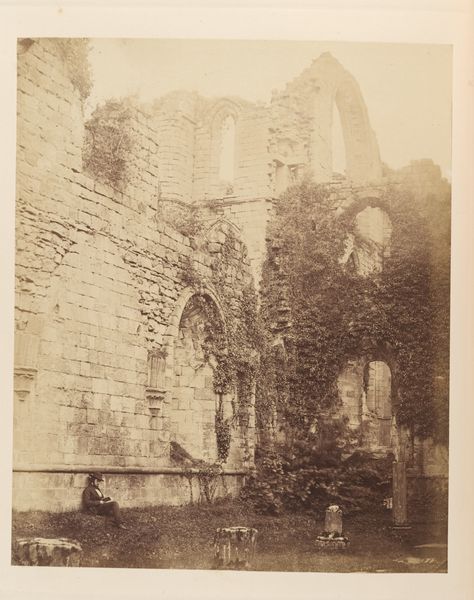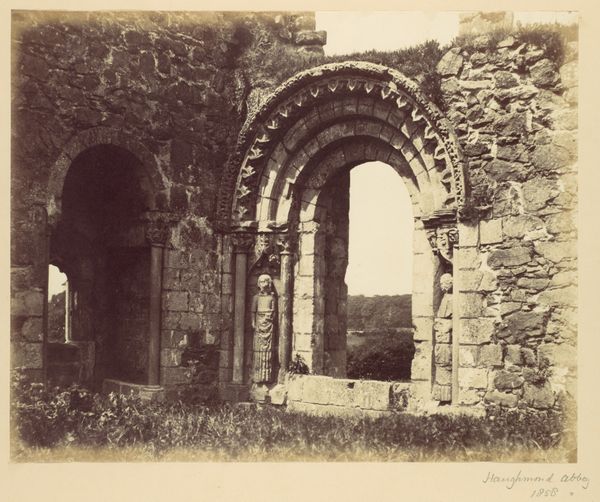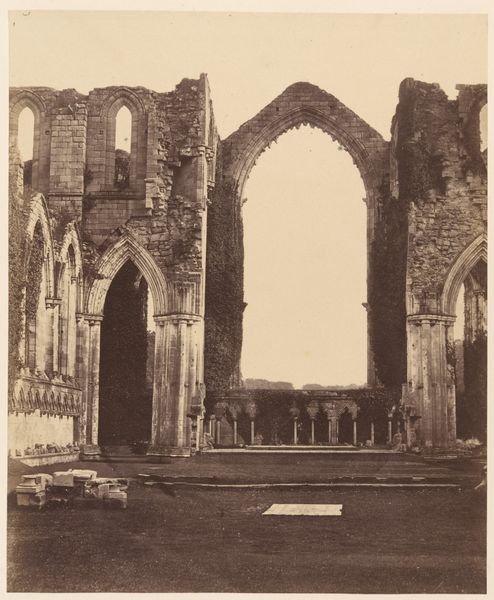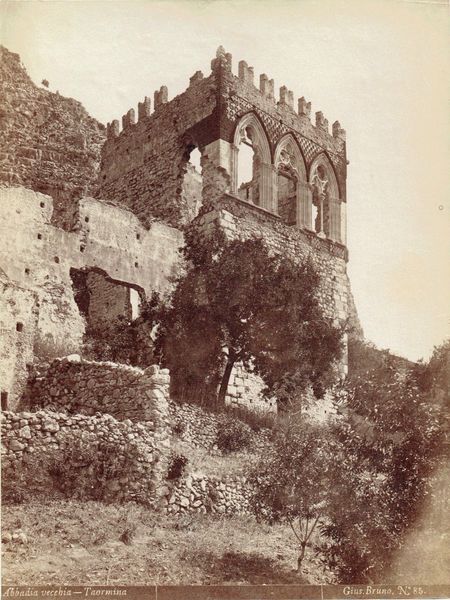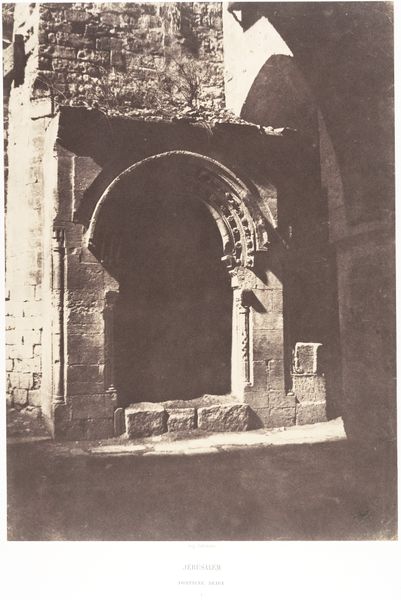
Jérusalem, Église Sainte-Anne, Vue générale 1854 - 1859
0:00
0:00
Dimensions: Image: 33.2 x 23.7 cm (13 1/16 x 9 5/16 in.) Mount: 60.4 x 44.8 cm (23 3/4 x 17 5/8 in.)
Copyright: Public Domain
Editor: Here we have Auguste Salzmann’s "Jerusalem, Église Sainte-Anne, Vue générale," created between 1854 and 1859, an albumen print depicting a general view of the Church of Saint Anne. I find the starkness of the photograph really striking. What’s particularly interesting to you about this piece, in terms of its historical context? Curator: Well, Salzmann was commissioned to take these photographs as part of a larger political and intellectual project. There was this strong 19th-century desire in Europe to document, and, in a way, *claim*, the Holy Land through photography. Think of it as photographic colonialism. Editor: So the photograph itself becomes a kind of political tool? Curator: Precisely. The French government, with its own imperial ambitions in the region, was invested in these photographic surveys. The archeological focus subtly legitimized a French presence and influence in Jerusalem. And remember, early photography was laborious. Choosing Sainte-Anne wasn't accidental, either. Editor: You mean, because of the French connection? Curator: Exactly. The church was, at the time of the photograph, understood as being under French control. This connects with broader debates at the time, which used history and archaeology to bolster specific religious and national claims in the region. Salzmann’s romantic framing really heightens this, doesn’t it? Editor: I see how the romantic style then also played into reinforcing European sensibilities. That's a much more complex picture than I initially considered! Curator: Yes! And the role that institutions and governments play in creating our understanding and interpretation of the region should not be overlooked. That's key, always! Editor: That's something to remember. Thank you!
Comments
No comments
Be the first to comment and join the conversation on the ultimate creative platform.

